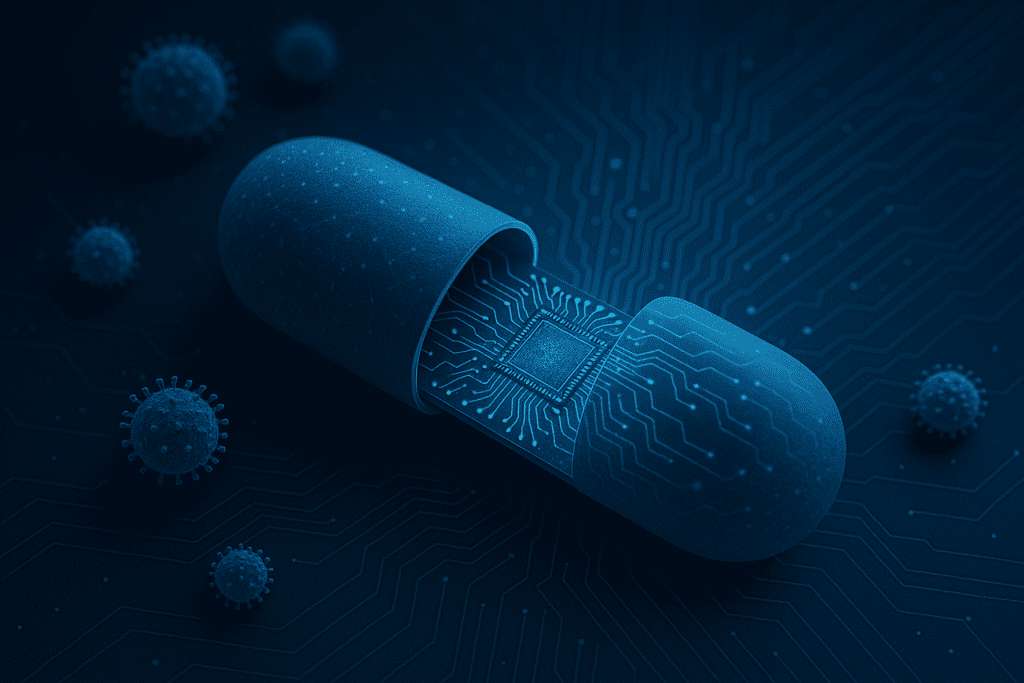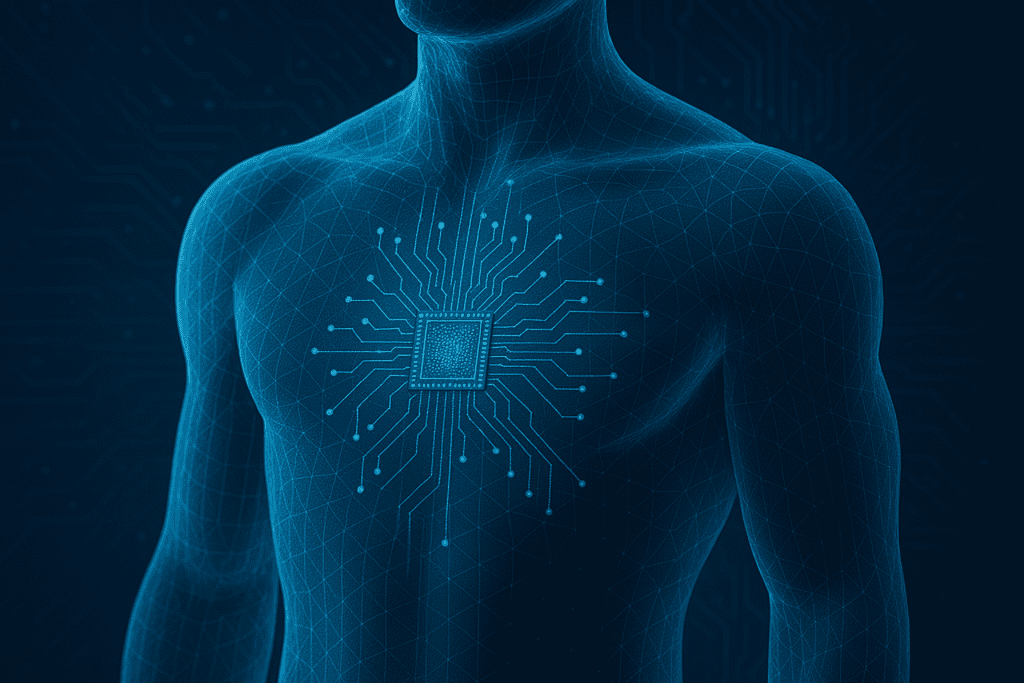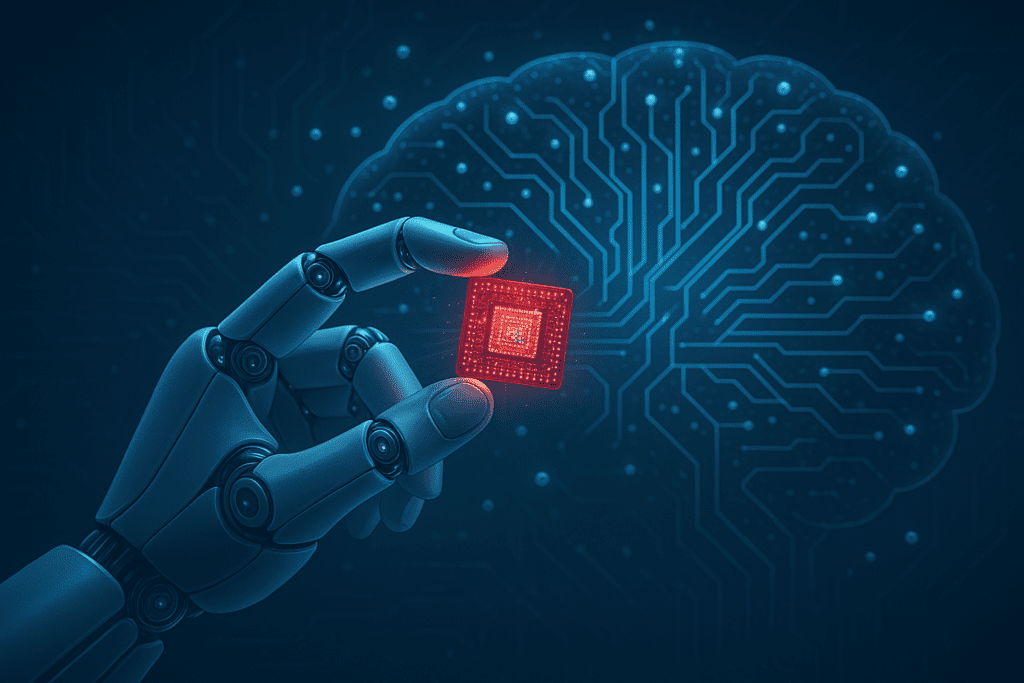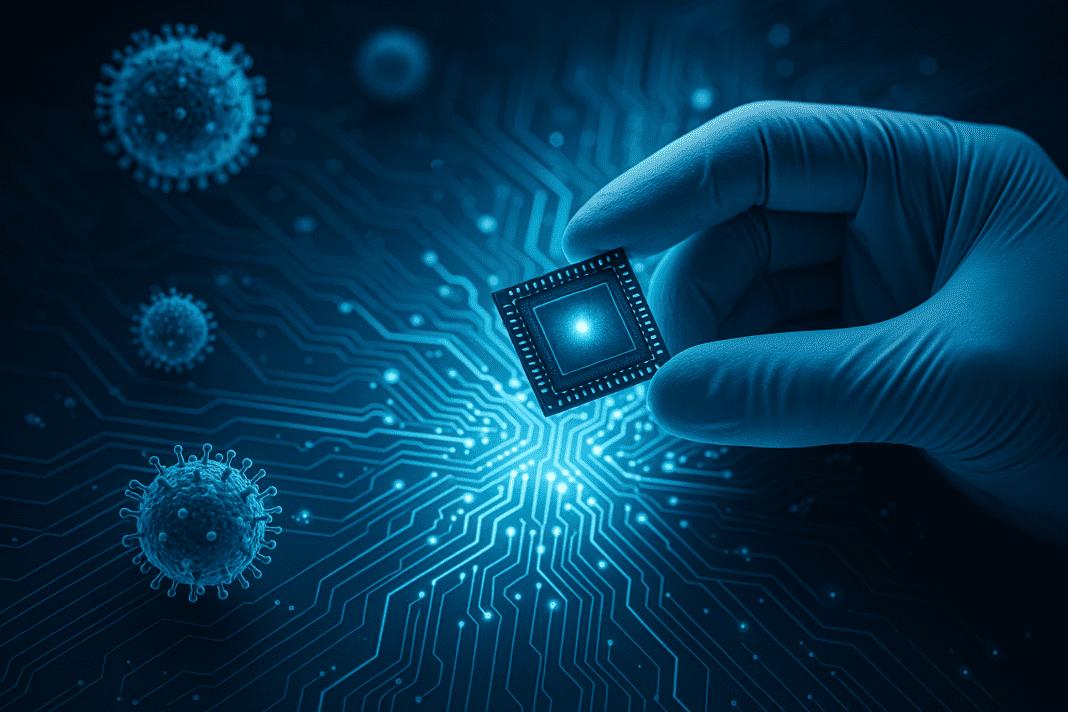The Dawn of Nanotechnology in Medicine and Electronics
Over the past few decades, the boundaries between disciplines have begun to blur, nowhere more compellingly than at the crossroads of medicine, electronics, and nanotechnology. This convergence has produced transformative changes, bringing forth innovations that were once the stuff of science fiction. Nanotechnology in electronic devices has not only revolutionized the tech industry but is also redefining healthcare diagnostics, treatment, and patient monitoring. With the power to manipulate matter at the scale of atoms and molecules, nanotech in electronics enables medical solutions that are more precise, less invasive, and highly personalized.
You may also like: Advancements in Healthcare Technology: How Emerging Innovations Are Transforming Patient Care
This transformation is rooted in the evolution of materials and tools that function on the nanoscale, typically defined as structures with dimensions of 1 to 100 nanometers. At this scale, materials behave in extraordinary ways that differ significantly from their bulk counterparts. These unique properties allow for the development of electronic devices that are smaller, faster, and more energy-efficient than traditional models. When this capacity is channeled into healthcare, the results are groundbreaking. Medical researchers are increasingly looking to nanotechnology and electronics as a pathway to novel therapies, smarter diagnostics, and targeted drug delivery systems.
The implications are vast. Imagine sensors that can detect early signs of cancer by identifying minute biochemical changes in real-time, or implantable devices that monitor and adjust insulin levels for diabetics with exquisite precision. These are not theoretical possibilities but real-world applications made possible through the fusion of nanotechnology and electronics. As we step deeper into the 21st century, the narrative of modern medicine is being rewritten by these microscopic marvels.
Understanding the Science Behind Nanotechnology and Electronics
To fully appreciate the impact of nanotechnology in electronic devices, it is essential to grasp the fundamental principles that underpin these innovations. Nanotechnology refers to the manipulation and engineering of materials at the atomic or molecular level. In electronics, this involves constructing devices whose components operate on scales so minute that quantum mechanical effects begin to dominate their behavior. This is where traditional laws of physics give way to a more nuanced, probabilistic framework.
One of the most striking features of nanoscale materials is their surface-area-to-volume ratio. As materials shrink to the nanoscale, their surface area increases relative to their volume, enhancing reactivity and allowing for more significant interactions with their environment. This characteristic is particularly valuable in sensor design, where responsiveness to biochemical changes is critical. In the context of medical diagnostics, nanosensors embedded in wearable electronics can detect shifts in temperature, pH, or biomarkers with astonishing sensitivity.
Additionally, the electrical, optical, and magnetic properties of nanomaterials can be precisely engineered. Quantum dots, carbon nanotubes, and nanowires are just a few examples of nanostructures that have demonstrated exceptional performance in electronic devices. These materials can be tuned to conduct electricity more efficiently, emit light in specific wavelengths, or react to magnetic fields in innovative ways. When embedded in medical devices, they enable functionalities that were inconceivable with conventional materials.
The integration of nanotechnology and electronics is not merely an enhancement of existing systems; it represents a paradigm shift. It redefines what is technically feasible in the design of medical devices. The convergence has unlocked possibilities that span from real-time monitoring of physiological functions to therapeutic interventions that operate at the cellular level. As researchers delve deeper into these mechanisms, the lines between electronics and biology become increasingly intertwined.
Revolutionizing Diagnostics with Nanotechnology in Electronic Devices
Diagnostics is arguably the most rapidly evolving domain within healthcare, and the advent of nanotechnology in electronic devices has significantly accelerated this progress. Traditionally, diagnostics relied on time-consuming laboratory tests, bulky imaging equipment, and invasive sampling. Today, the fusion of nanotech in electronics has yielded devices that bring laboratory-grade diagnostics to the bedside, the clinic, and even the patient’s home.
One compelling example is the development of lab-on-a-chip systems. These are miniature devices that integrate multiple laboratory functions onto a single chip no larger than a postage stamp. Using nanomaterials such as gold nanoparticles or silicon nanowires, these devices can detect pathogens, proteins, and genetic material with incredible specificity and speed. Patients can receive results in minutes rather than days, facilitating quicker decision-making and improving outcomes.
Another remarkable innovation is the wearable diagnostic sensor. These devices, often integrated into smartwatches or patches, utilize nano-engineered sensors to monitor vital signs such as heart rate, respiration, and glucose levels continuously. More advanced versions can detect abnormal levels of cytokines or other biomarkers indicative of inflammation or infection. These technologies are particularly valuable in managing chronic conditions, where real-time data can preempt severe complications.
Furthermore, nano-enabled imaging technologies have transformed how clinicians visualize internal structures. Quantum dots, for example, are used as contrast agents in imaging scans. These nanoscale particles emit light when stimulated and can be designed to target specific tissues, providing high-resolution images at the molecular level. This level of detail enhances early detection, especially in oncology, where identifying malignancies at the earliest possible stage can be life-saving.
The benefits of nanotechnology and electronics in diagnostics go beyond efficiency and precision. They democratize access to healthcare by making sophisticated diagnostic tools more affordable and portable. In resource-limited settings, where access to full-scale medical labs is scarce, these innovations could bridge significant gaps in healthcare delivery.

Advancing Treatment Modalities Through Nanotech-Enabled Devices
While diagnostics lay the groundwork for understanding disease, effective treatment remains the ultimate goal of medical innovation. In this context, nano technology in electronics is paving the way for therapies that are not only more targeted but also safer and more effective. The integration of nanoscale components into medical devices allows for interventions that align closely with the body’s natural physiology.
One of the most promising developments is in targeted drug delivery. Traditional drug administration often involves systemic circulation, affecting both diseased and healthy tissues. However, nanotechnology allows for the creation of smart drug delivery systems that release therapeutic agents directly at the site of disease. Electronic controls can be embedded to regulate dosage based on real-time feedback from biosensors, minimizing side effects and enhancing efficacy.
Implantable devices are also undergoing a renaissance through nanotech. For instance, pacemakers and neurostimulators now incorporate nanoscale sensors and circuits that adapt to the patient’s physiological conditions in real-time. This adaptability results in more responsive treatments and longer device lifespans. Some devices are even capable of harvesting energy from the body’s movement or heat, reducing the need for battery replacements.
Photothermal and photodynamic therapies, enabled by nanotechnology and electronics, offer non-invasive treatment options for cancer and other conditions. In these therapies, nanoparticles are introduced into the body and activated by light or other stimuli to destroy targeted cells. Electronic components guide the activation process, ensuring that only diseased tissues are affected while sparing healthy ones.
Moreover, nanotechnology is being used to develop bioelectronic medicines, a novel class of therapeutic devices that interface directly with the nervous system. These devices modulate neural circuits to treat chronic diseases such as rheumatoid arthritis, diabetes, and even depression. By precisely controlling electrical signals, they offer a level of specificity that pharmaceuticals alone cannot achieve. As this field evolves, the potential for curing rather than merely managing disease becomes increasingly plausible.
Smart Wearables and Personalized Healthcare: The New Frontier
One of the most visible manifestations of the synergy between nanotechnology and electronics is the rise of smart wearables. These devices are not just fitness trackers; they are sophisticated health monitors that represent a new model of personalized medicine. By leveraging nanoscale sensors and materials, smart wearables collect a wealth of physiological data that can inform real-time health decisions.
These devices are particularly transformative in managing chronic conditions such as diabetes, hypertension, and cardiovascular disease. For example, continuous glucose monitors (CGMs) equipped with nanotech sensors can provide real-time blood sugar readings without the need for finger pricks. Some systems even use predictive algorithms to warn users of impending hypoglycemic or hyperglycemic events, allowing for proactive management.
Another application is in cardiac health. Smart patches and watches can detect arrhythmias, monitor blood pressure, and assess heart rate variability with clinical-grade accuracy. These insights are invaluable not only for patients but also for healthcare providers, who can adjust treatment plans based on actual, continuous data rather than intermittent clinic visits. In this way, nanotechnology in electronic devices is shifting healthcare from reactive to proactive.
Mental health monitoring is also entering the wearable domain. Emerging devices use nano-enabled electrodermal sensors to measure stress levels by tracking changes in skin conductance. Coupled with machine learning algorithms, these devices can identify patterns associated with anxiety or depression and recommend interventions ranging from breathing exercises to clinical consultation.
Beyond physical health, smart wearables are becoming integral to holistic well-being. Sleep quality, hydration levels, and even exposure to environmental toxins can be monitored through nanotech-enhanced devices. The information generated empowers users to take control of their health, making lifestyle adjustments that align with long-term wellness goals.

Ethical Considerations and Challenges in Implementation
As with any powerful technology, the integration of nanotechnology and electronics into healthcare raises significant ethical and practical concerns. Chief among these is data privacy. Devices that collect continuous health data must ensure that this information is securely stored and transmitted. Breaches could have serious consequences, not just financially but in terms of patient trust and well-being.
There is also the question of accessibility. While nanotech in electronics promises to democratize healthcare, the reality is that cutting-edge devices are often expensive and may not be covered by insurance. Without careful policy planning and public health strategies, there is a risk that these innovations could widen existing disparities in healthcare access.
Another challenge lies in regulatory oversight. Nanotechnology operates at a scale that traditional medical device regulations may not adequately address. Ensuring safety, efficacy, and quality control requires new frameworks and a deep understanding of nanoscale interactions. This is especially true for devices that interface directly with biological tissues or alter physiological functions.
Ethical concerns also extend to the potential for unintended consequences. For example, nanoparticles introduced into the body may interact with tissues in ways that are not yet fully understood, posing risks of toxicity or immune reactions. Long-term studies are essential to evaluate these risks comprehensively. Transparency in research and open dialogue between scientists, clinicians, and the public are vital in navigating these uncertainties.
Furthermore, there is a need to balance innovation with societal values. The allure of technological enhancement must not overshadow the importance of informed consent, autonomy, and the right to decline treatment. As the line between therapeutic and augmentative devices becomes increasingly blurred, ethical considerations must remain at the forefront of development.
The Road Ahead: Future Directions in Nano Technology in Electronics for Medicine
The future of nanotechnology in electronic devices for healthcare holds immense promise. Researchers are exploring self-assembling nanostructures that could form functional devices within the body, opening up new frontiers in regenerative medicine. These structures could potentially repair damaged tissues or even grow new organs, guided by electronic cues that mimic natural biological processes.
Another exciting avenue is the development of brain-computer interfaces (BCIs) using nanoscale electronics. These interfaces aim to restore communication and mobility in individuals with severe neurological conditions by translating brain signals into actionable outputs. The success of such technologies depends heavily on the precision and biocompatibility afforded by nanotechnology.
Moreover, artificial intelligence and machine learning are poised to synergize with nano-enabled devices. By analyzing vast datasets generated by wearables and implantables, AI can identify patterns that elude human detection, leading to earlier diagnoses and more personalized treatment plans. This convergence of AI, nanotechnology, and electronics could redefine healthcare as we know it.
Additionally, sustainable and biodegradable nanomaterials are being developed to address environmental concerns. Devices made from these materials can safely degrade after use, reducing medical waste and minimizing ecological impact. This innovation aligns with the broader goals of responsible and sustainable healthcare.
Collaborations between academic institutions, industry leaders, and policymakers will be critical in shaping the future of nanotechnology and electronics in medicine. Interdisciplinary research, open innovation platforms, and ethical foresight will help ensure that these powerful tools serve the greater good.
Frequently Asked Questions: Exploring the Impact of Nanotechnology in Electronic Devices on Medical Innovation
1. How are nanotechnology and electronics transforming emergency medicine beyond hospital settings?
Nanotechnology and electronics are rapidly changing how emergency care is administered outside the confines of hospitals. Portable diagnostic devices powered by nanotech in electronics are being integrated into ambulances and field kits, enabling paramedics to analyze blood biomarkers or vital signs within minutes of arrival. These real-time assessments guide immediate interventions and can drastically reduce treatment delays during critical emergencies like heart attacks or strokes. In addition to diagnostics, nano-enhanced devices such as wearable defibrillators and auto-injectors use responsive electronics to adapt to the user’s physiology, delivering just the right dose or shock intensity. The versatility and portability of nanotechnology in electronic devices are not just enhancing survival rates, but also transforming emergency response protocols globally.
2. Can nanotechnology in electronic devices support remote surgical procedures?
Yes, nanotechnology in electronic devices is playing a vital role in enhancing remote surgical capabilities, also known as telesurgery. Robotic surgical arms fitted with nano sensors can provide tactile feedback to the operating surgeon, replicating the sensation of touch through electronic translation. These nano-scale interfaces enable microscale movements and adjustments that were previously impossible through remote control. Additionally, smart surgical tools with embedded nanotech in electronics allow for real-time monitoring of tissue response, bleeding, and pressure during a procedure. With ultra-fast connectivity and precise nanoscale instrumentation, this convergence is paving the way for safe and effective surgeries across long distances, particularly beneficial in underserved or rural regions.
3. What role does nano technology in electronics play in managing neurological disorders?
Nano technology in electronics is opening revolutionary avenues in the treatment and management of neurological disorders. Implantable nano-electronic devices can now detect subtle changes in brain activity that signal the onset of epileptic seizures, allowing for timely therapeutic responses. Deep brain stimulation systems are becoming increasingly sophisticated through the integration of nano-scale electrodes, which can modulate neural circuits with greater accuracy and fewer side effects. Furthermore, nanotechnology and electronics are being used to create flexible neural interfaces that conform to brain structures, minimizing inflammation and enhancing long-term biocompatibility. These innovations are not only advancing treatment options but also supporting neurorehabilitation and recovery in patients with conditions such as Parkinson’s disease, spinal cord injuries, and traumatic brain injuries.
4. Are there psychological implications of using wearable nanotech medical devices?
Absolutely, the psychological impact of continuous monitoring through wearable devices embedded with nanotechnology and electronics is becoming a subject of growing interest. While many users appreciate the health empowerment that comes with real-time feedback, others may experience increased anxiety or hyper-awareness, especially when interpreting abnormal readings. There’s also an emerging concern about privacy and the psychological stress linked to data sharing, particularly when sensitive health metrics are uploaded to cloud systems. However, advancements in user interface design are beginning to prioritize mental well-being by integrating coaching features, reassurance prompts, and context-aware alerts. By refining the behavioral design of nanotechnology in electronic devices, developers can enhance not only physical outcomes but also the mental health of users.
5. How are military healthcare systems adopting nanotech in electronics for battlefield medicine?
Military healthcare systems are at the forefront of adopting nanotech in electronics to address the extreme demands of battlefield environments. Soldiers now wear nano-engineered biosensors embedded in their uniforms or helmets to detect dehydration, hypoxia, or exposure to toxins. These sensors transmit data wirelessly to field medics or command units, enabling rapid triage and informed decisions even before visual assessment. Furthermore, nano-enabled electronic bandages have been developed to deliver localized treatment while monitoring wound healing in real time. The integration of nanotechnology and electronics in military medical gear is not only improving survival rates but also contributing to faster recovery and better post-trauma care, even in the most austere conditions.
6. What advancements are being made in nano-enhanced fertility and reproductive health monitoring?
Nanotechnology in electronic devices is showing immense promise in the field of fertility and reproductive health monitoring. Advanced biosensors embedded in wearable devices can now detect hormonal fluctuations with greater sensitivity than traditional test strips, helping users accurately predict ovulation cycles. Smart contraceptive implants, powered by nanotech in electronics, can be wirelessly activated or deactivated under medical supervision, providing unprecedented control over reproductive health. Additionally, research is underway to develop nano-scale diagnostic chips that analyze semen quality or identify early signs of reproductive disorders using just a small fluid sample. These advancements are particularly valuable in fertility planning and reproductive care, offering more precise, private, and user-controlled options.
7. How is nanotechnology helping reduce electronic waste in medical environments?
The integration of biodegradable materials in nanotechnology and electronics is contributing to the reduction of medical electronic waste. Devices fabricated with nano-engineered polymers or cellulose-based substrates can naturally break down after use, minimizing the environmental footprint. Hospitals are starting to adopt single-use diagnostic sensors and drug delivery patches that dissolve safely post-application, reducing reliance on energy-intensive sterilization and disposal processes. Researchers are also designing components with modular nano elements, allowing certain parts to be reused or repurposed without full-device replacement. As sustainability becomes a core pillar in healthcare innovation, nano technology in electronics is offering eco-friendly alternatives without compromising medical efficacy.
8. Are there ethical concerns with implantable nanotech medical electronics?
Yes, the ethical landscape surrounding implantable devices that utilize nanotech in electronics is both complex and evolving. One key concern is consent and autonomy, especially when devices are designed to operate autonomously or transmit data without constant user awareness. Additionally, there is debate around data ownership—who has the right to access or monetize health information collected by implantable technologies? Concerns about bodily integrity also arise, particularly when devices are designed for enhancement rather than treatment. Balancing innovation with ethical oversight is essential, and institutions are increasingly calling for interdisciplinary boards to review clinical trials involving nanotechnology in electronic devices. Transparency, regulation, and informed consent are foundational to maintaining public trust as these technologies advance.
9. How are startups driving innovation in nanotechnology and electronics for healthcare?
Startups play a crucial role in the fast-paced development of nanotechnology and electronics in healthcare, often acting as agile incubators of breakthrough ideas. Many emerging companies focus on ultra-specialized applications such as breath-based diagnostics for metabolic disorders, or nano-electronic patches that monitor muscular performance in rehabilitation. Unlike larger corporations, startups can pivot quickly, adapting their technologies to niche patient needs or collaborating with academic institutions on novel research. Crowdfunding and accelerator programs have also provided these innovators with platforms to validate, test, and scale their nano technology in electronics solutions. By focusing on user-centered design and unmet clinical needs, startups are often the first to bring disruptive nanotech innovations to market.
10. What are the long-term societal impacts of widespread adoption of nanotechnology in electronic devices?
The widespread adoption of nanotechnology in electronic devices could fundamentally reshape society’s relationship with healthcare, shifting from institutional to individualized care models. As more people rely on real-time data to manage their health, traditional check-up routines may evolve into continuous, remote engagement between patients and providers. There are also implications for insurance models, employment health benefits, and workplace accommodations as biometrics become more integral to risk assessment. On a broader scale, nanotech in electronics could fuel the growth of preventative medicine, potentially lowering healthcare costs and reducing the burden on public systems. However, to ensure equitable access and prevent digital health inequality, policies must evolve alongside technology, ensuring that benefits are distributed across all demographics.

Conclusion: Embracing the Promise of Nanotechnology and Electronics in Medical Innovation
As we stand on the cusp of a new era in healthcare, it is clear that nanotechnology and electronics are no longer auxiliary components but central pillars of medical innovation. The integration of nanotech in electronics has already transformed how we diagnose, monitor, and treat disease, offering solutions that are more precise, personalized, and proactive than ever before.
From lab-on-a-chip diagnostics to smart wearables and bioelectronic medicines, the potential applications are both vast and profound. These advancements hold particular promise in addressing chronic conditions, improving patient outcomes, and reducing the burden on overextended healthcare systems. However, as we embrace this future, it is equally important to remain vigilant about ethical, regulatory, and societal considerations.
The continued evolution of nano technology in electronics will depend on sustained investment in research, thoughtful policy frameworks, and inclusive innovation strategies. Only by aligning technological progress with human values can we ensure that the benefits of this tiny tech are realized by all.
In the end, the marriage of nanotechnology in electronic devices and medicine represents not just a technological leap, but a profound shift in how we understand and care for the human body. The journey ahead promises to be as challenging as it is exciting, but the potential rewards—in terms of human health and well-being—are immeasurable.
smart medical devices, wearable health tech, precision medicine innovations, biomedical engineering trends, remote patient monitoring, AI in healthcare, electronic biosensors, implantable health devices, future of digital health, personalized treatment technology, health tech startups, non-invasive diagnostics, brain-computer interfaces, medical device sustainability, biodegradable sensors, surgical robotics, health data ethics, medical nanomaterials, digital therapeutics, neural interface technology
Further Reading:
Emerging Applications of Nanotechnology in Healthcare and Medicine
Four major ways nanotechnology is changing the future of healthcare
Nanotechnology: A Revolution in Modern Industry
Disclaimer
The information contained in this article is provided for general informational purposes only and is not intended to serve as medical, legal, or professional advice. While MedNewsPedia strives to present accurate, up-to-date, and reliable content, no warranty or guarantee, expressed or implied, is made regarding the completeness, accuracy, or adequacy of the information provided. Readers are strongly advised to seek the guidance of a qualified healthcare provider or other relevant professionals before acting on any information contained in this article. MedNewsPedia, its authors, editors, and contributors expressly disclaim any liability for any damages, losses, or consequences arising directly or indirectly from the use, interpretation, or reliance on any information presented herein. The views and opinions expressed in this article are those of the author(s) and do not necessarily reflect the official policies or positions of MedNewsPedia.


